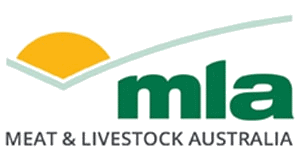Non-insecticidal buffalo fly control using behaviour-modifying systems
| Project start date: | 01 January 1995 |
| Project end date: | 01 March 1997 |
| Publication date: | 01 March 1997 |
| Project status: | Completed |
|
Download Report
(0.6 MB)
|
Summary
The literature on the behaviour, the role of attractants, arrestants and repellents and the population dynamics of the buffalo and horn flies was reviewed. The behaviour of buffalo flies in locating and when residing on cattle has been investigated. Orientation of flies to animals occurred in freshly emerged flies, but the response increased to a maximum at 16-17 hours post emergence. Numbers of buffalo flies on animal in pens fluctuated throughout the day and night indicating that the flies regularly leave and return to their hosts. Olfaction and vision in buffalo flies have been identified as important components in the location of host cattle and cattle dung.
The work in this project aimed at modifying the behaviour of buffalo flies with chemical and/or visual means, so that the flies will not be able to locate cattle or egg laying sites. This would result in a disruption of the flies life cycle, leading to lower fly populations, and thus assist in control. Substantial progress was achieved in the search for, and the assessment of, the effectiveness of chemical and visual cues, but further improvements in synthetic chemical attractants and in understanding the role of visual targets are still required. A list of chemical compounds contained in odours emanating from cattle and their excretions was compiled from work done by overseas groups and by us using gas chromatography/mass spectrometry. These compounds were considered potential chemical cues in attracting buffalo fly to cattle. The responses of buffalo flies to many single chemicals, mixtures of chemicals and bovine derived natural odours enhanced with synthetic components were assessed in an olfactometer, a fly cage assay, in the behavioural observation facility for flies (BOFF) and in the field.
Good responses were obtained for bovine odours, bovine odours enhanced with synthetic chemicals and some mixtures of synthetic chemicals. A direct comparison of a synthetic mixture with odours from a steer showed that a similar response to the two stimuli could be obtained in the fly cage assay. This is a very encouraging result and an indication that the synthetic odour developed has the potential of efficiently attracting buffalo flies. We showed that buffalo flies, fly cage linings and extracts thereof (cuticular hydrocarbons) elicit a behavioural response in buffalo flies and determined their chemical nature. Investigations of potential visual cues revealed buffalo flies oriented towards model cows and black rectangular targets in the BOFF and field situations. In the BOFF, there was an increase in the percentage responding when animal odour was superimposed on the visual targets. The addition of lures for other flies to visual targets in the field did not increase their attractivity to buffalo flies. Also, none of the other traps developed for stock associated flies caught buffalo flies. The use of light traps to attract buffalo flies at night was evaluated. It was demonstrated that buffalo flies could orient towards a light source up to a distance of 60 metres. Light traps near penned cattle reduced fly numbers on cattle. However, in a small paddock the light trap had no apparent short term effect on fly numbers on cattle.
More information
| Project manager: | David Beatty |
| Primary researcher: | QLD Department of Primary Industries |


